The fauna of the Caspian Sea.
The aims of my project
To get more information about the animals of the Caspian Sea
To learn more about the history of the Caspian Sea
To attract the attention to the pollution of the Caspian Sea
About 130 million years ago two ancient supercontinent (fragments Pelagia) Laurasia and Gondwana were separated then the mighty Tethys. Laurasia included part of present-day North America, Asia and Europe, and Gondwana - Africa, South America, Australia and Antarctica. When the two superamerica split and began to disperse, their parts were removed or encountered each other, forming a powerful mountain massifs and the system. In place of the Tethys, in one of the districts, originated in the Alpine-Himalayan mountain belt.
The ocean water was pushed out of the areas of land elevation, leaving only isolated inland seas in the areas of lowlands and depressions.
Thus the Mediterranean Sea was formed, which then included the present Sea of Azov, Black and Caspian Seas. On the site of the modern Caspian Sea a huge Caspian lowland formed, the surface of which was almost 30 meters below the water level in the oceans. When the next rise of land in the area of the Caucasus Mountains started, the Caspian Sea was completely cut off from the ocean, and in its place formed closed reservoir, which is the largest inland sea on the planet. However, some scientists call it the sea, a giant lake.
The Caspian Sea is located at the crossroads of Europe and Asia. The length of the sea from North to South, about 1200 kilometers, from West to East — from 195 to 435 miles, averaging 310-320 kilometers. The Caspian Sea is divided into three parts — the Northern Caspian Sea (25 % of the sea), Middle Caspian (36 %) and South Caspian (39 %). The conditional border between the Northern and Middle Caspian runs along the line Chechen ' island — Cape Tyub-Karagan, between the Middle and South Caspian Sea — the island Chilov— Cape Gan-Gulu.
In the Caspian Sea is home to 1809 species and subspecies of animals, of which 1069 free-living invertebrates, parasitic - 325, and spinal animals 415 species.
In the Caspian Sea, it is possible to distinguish 5 groups of free-living animals (1172), which reflect the basic features of its complex history.
The FIRST GROUP is the CASPIAN AUTOCHTHONOUS FAUNA. The total number of autochthonous - 513 species or 43.8% of the total fauna. They are descendants of the ancient forms, which inhabited the Sarmatian and Pontic basins. Their representatives are herring, gobies, and clams.
The SECOND GENETIC GROUP of the Caspian Sea constitute the ARCTIC SPECIES, whose ancestors are now widespread in the Northern seas. They came to the Caspian Sea in post-glacial time, about 10-12 thousand years ago. The total number of Arctic group of 14 species and subspecies, or only 1.2% of the entire fauna of the Caspian sea (mizidy, sea cockroach, white salmon, Caspian salmon, Caspian seal, etc.). The basis of the Arctic fauna are crustaceans (71,4%). She easily carries desalination, indicating that the freshwater of the way the relocation of its North Polar basin into the Caspian Sea over lake-river system that emerged in the post-glacial period.
Arctic species live at great depths of the Middle and southern Caspian - from 200 to 700 m. This is because here throughout the year held the lowest water temperature (4,9-5,9 C).
The THIRD GROUP of FAUNA of the Caspian Sea is the MEDITERRANEAN SPECIES, which penetrated from ancient Black Sea pool. These are 2 species of mollusks, needle-fish, etc. In the early 20-ies of our century got a clam Mytilaster, later 2 species of shrimp (with the mullet, during their acclimatization), 2 species of mullet and flounder. Some Mediterranean species penetrated into the Caspian Sea after opening of the Volga-don canal.
Mediterranean species play a significant role in prey base fishes of the Caspian Sea.
The FOURTH GROUP is the FRESHWATER FAUNA (228 species), for the first time penetrated into the Caspian Sea in late tertiary time. Earliest check-in the Caspian Sea freshwater species occurred in the history of the sea a few times in those periods when it is the most distilled. This group also includes anadromous and catadromous fish. They settled into the sea from rivers, which emptied into the Caspian Sea before the waters from the North and from the West. It's sturgeon, salmon, makovye, catfish, carp, and also rotifers.
The FIFTH GROUP consists of MARINE SPECIES. This ciliate (386 forms), two species of foraminifera. One of the characteristic features of the fauna of the Caspian Sea is the fact that many animals, once in the new conditions, forming new species. These are amphipods, herring, and gobies. The Formation of new species was the isolation of the Caspian Sea from other seas. Amid the General impoverishment of the ancient marine fauna, some of its representatives have discovered a greater ability to speciation in the Caspian Sea. In the period of Quaternary, transgressions of the Caspian Sea had a brief communication with other seas; and so on, it entered the Mediterranean and Arctic species.
Especially many endemic species among the higher crustaceans (31 species), gastropods (74 species and subspecies), bivalves (28 species and subspecies) and fish (63 species and subspecies). The abundance of endemic species in the Caspian Sea makes it one of the most peculiar brackish waters of the planet. The uniqueness of the Caspian fauna is that out of the Caspian sea, it inhabits mainly brackish estuaries and the lower reaches of rivers of the Black and Azov seas, but not their marine waters, where the Mediterranean fauna.
Invertebrates and vertebrates inhabit the fauna of the Caspian Sea.
INVERTEBRATES Fauna of the Caspian Sea consists mainly of invertebrates, which account for 1394 species or 77.1% of the total fauna. Among the invertebrates of the Caspian sea the most numerous groups are ciliates, nematodes, rotifers and copepods, with a total of 734 species or 52.6% of all invertebrates.
CILIATES. Type of ciliate belongs to the simplest organisms of the animal world. Bodies the motion they are cilia. Most ciliates have cilia, and they are sucking only at certain stages of the life cycle. In the Caspian Sea 439 free-living and 21 species of parasitic forms was found. The most abundant ciliates fine sand of the coastal zone. Ciliates play an important role in the self-purification of seawater, and diet of mollusks and crustaceans.
RHIZIPODS. The superclass of rhizopods are the simplest, having a dense shell body and capable of forming pseudopods with which they move and capture food. They do not have a permanent cell mouth. Body naked or covered with mineral shell with holes for pseudopod. Most simply organized organisms among rhizopods - naked amoeba, the size of which ranges from several microns to 3 mm. The Caspian Sea is home to 18 species of corneous livings in the water column and on the seabed.
FORAMINIFERA. These include single-celled animals whose bodies are enclosed in shell, which are single-chamber and multichamber. Many foraminifera wall calcareous shells penetrated by numerous fine pores, through which extend numerous pseudopodia. However, some of them have a skeleton formed by the sand grains glued to the outer layer of the body. In fresh waters, they are extremely rare and therefore are considered relicts of ancient marine fauna. In the Caspian Sea there are 18 species. The presence of foraminifera can read the story of the sea.
SPONGE. This is the most primitively organized multicellular animals. Meet oval, spherical, pillow-like, lamellar and encrusting sponges. They lead sedentary lifestyle. Body color ochre, orange, and other colors. Under the action of the ciliated flagellated movement through pores and channels of the sponge is seawater that delivers oxygen to the animals, and food particles.
COELENTERATES. Type intestinal cavity is characterized by radiant or radial symmetry, most of them are stinging cells that paralyze their prey and defend against enemies. Among the intestinal cavity, there are sedentary forms - POLYPS and free-swimming - JELLYFISH. The Caspian Sea is inhabited five types: autochthonous species are: CORDYLOPHORA and MOERISIA. CORDYLOPHORA (sessile form of the intestinal cavity) has the form of irregularly branched shrub, living near the ports at a depth of 0-85 m.
CILIATED WORMS. Are type of flatworm? Body elongate, leaf-like and usually devoid of appendages. The body is white or colorless. Live both in the seas and in fresh waters. In the Caspian Sea 29 species are found.
NEMATODES. Belong to the type of round worms. The body is cylindrical and fusiform. Live in the seas and in fresh waters and soils. Many of them are parasitic forms that live in all bodies of animals and plants. 20 thousand species are known, including the Caspian Sea discovered 52 species of free-living nematodes. In addition, they serve as INDICATORS of WATER POLLUTION AND SOIL.
ROTIFERS. Belong to the type of round worms. Move by using cilia. On the head there is an apparatus that serves for swimming and engaging in the mouth of food particles. In the Caspian sea detected 67 species, most of which occur in the space near the mouth of the Volga. Of great importance in fish nutrition.
POLYCHAETE WORMS. Are type of annelid worms? The body is segmented. A characteristic feature - the presence on the body of paired lateral outgrowths. Some species crawl along the bottom, digging in the ground or floating in the water column. Other species are sedentary animals that live in protective tubes. In the Caspian Sea discovered seven species. It is a valuable food for fish. In 1939-1941.g. in the Caspian Sea worm NEREIS were acclimatized to enhance forage fish . He was brought here from the Sea of Azov. Currently, Nereis is distributed throughout the Caspian Sea and plays an important role in the diet of sturgeon.
In the Caspian Sea Dating from annelids, Oligochaeta (OLIGOCHAETES) play a pivotal role in the diet of bottom fish. In addition, from annelids here you can find LEECHES. In the Caspian Sea 3 species of leeches are discovered, are HERMAPHRODITIC with direct development. They live on plants, and can also parasitize on fish than bring harm to them.
In the Caspian Sea, cladocerans and copepods crustaceans are widely distributed. Basically it is a freshwater species penetrating from the river waters. This free-living species, but among them are parasitic forms. Some types of copepods are intermediate hosts of parasites of humans and animals. Among the Cladocera crustaceans has an interesting view of Cercopagis Spezia, which fell into the Baltic Sea and there was the "run amok" finding a suitable environment and causing great harm to this fishery. Are small crustaceans with a long forked tail?
The Caspian Sea is very richly represented CRUSTACEANS. This MIZIDY, whose head and most of his chest covered with shield. All species of the genus mizidy have Arctic origin. Mizidy feed mainly on detritus and are food for many fish - a pike perch, sturgeon, bream, etc. BARNACLES CRUSTACEANS are characterized by the fact that their body is enclosed in the "house" of several calcareous plates. The Caspian Sea is marked by 2 species, and they play a negative role because they acquire much underwater parts of ships, buoys and hydraulic structures.
Here decapods are widely distributed. In the Caspian Sea five types of 10-legged cancers, 2 types of shrimp and Crab are discovered, penetrated into the sea in 1958 on the Volga-don canal. Crab spread to 50 meters depth. It feeds on Nereis, shrimps and shellfish, so crab is twofold. On the one hand, due to crab fish (sturgeon, carp, roach etc.) has expanded its range of power, but on the other hand, it became a serious competitor to commercial fish.
Cancers are represented in the Caspian Sea by 3 species, among which the largest is dominated by long cancer. In addition, it is home to the Turkmen and Caspian cancers. In the Caspian Sea can produce up to 300 tons of crayfish per year. The accumulation is confined to silt and sandy-silt soils on the coast of Middle and South Caspian. The basis of the food of the crayfish is detritus, in addition, they are active consumers of dead organic matter. Crustaceans - indicators of clean water. In the Gulf of Karabogazgol inhabits other representative crustaceans - Artemia.
In the Caspian Sea diversity of MOLLUSKS is richly represented in species. Here, they discovered up to 178 species. In bivalves, the body is not segmented, soft and consists of head, body and muscular foot located on the ventral side. For Europe and Asia it's foamy protein product, we are in a food is not consumed. The body of mollusks is mainly enclosed in a shell consisting of one or two valves. Mollusks inhabit the seas, freshwater and on land. Own species of mollusks of the Caspian Sea play a small role in the productivity of the sea. Some of the popular types of ground inhabitants is MYTILASTER and ABRA. The first clam came from the Black sea in 1928 when the transfer of the boats to the Caspian Sea by railroad from Batumi and Abra - in 1939 - 1940 was specifically the universe from the Sea of Azov to enhance the forage base of the Caspian Sea.
VERTEBRATES. In the Caspian Sea, as already mentioned, inhabits 415 species of vertebrates, represented by lampreys and fishes, reptiles, birds and mammals. In the Caspian Sea is home to 124 species and subspecies of lampreys and fishes and is second in species diversity of the open seas. However, a limited number of Caspian ichthyofauna in a marked degree recompense its quantitative development. Hence, the Caspian Sea is the major fishing area of Eurasia.
REPTILES. At present, there are 8000 species of reptiles. In the Caspian Sea we can find only two species of snakes: grass and water.
ORDINARY SO widespread and different from other snakes large, bright spots (yellow, orange, off-white), located on each side of the head. The coloration of the back is dark gray to black in color with a white belly, with black spots. Body length up to 1.5 m Occur in lower reaches of rivers, bays and on the coast of the Caspian Sea. Quickly crawling can climb trees and are great swimmers. Lay eggs 6 to 30 PCs in July - August. For the winter leave in October - November, active from March to October. They feed on frogs, tadpoles, lizards, small birds, and newborn young of rats and muskrats.
WATER SNAKE. Coloration olive green, olive-green or brownish, with dark, staggered spots. On the nape there is a dark spot. The belly is yellowish to red. The body length of 1.3 m or more. Floats well even in heavy seas. Day visible even on the rocks, at night, hiding under a layer of withered Wraith of grass or under stones. Lay 6 - 20 eggs in June - July. They feed on amphibians, fish and their fry.
BIRDS. Most rich in the world of birds. In the area of the Caspian Sea, there were about 312 species of birds. Here are nesting many species of waterfowl and is also home to the unique breeding colony of Ciconiiformes and pelecaniformes. In the Caspian Sea ducks, geese, swans, coots and other species spend winter.
Focus only on the most important representatives of the avifauna, those are listed in the Red book and are of special interest as target species.
DALMATIAN PELICAN. It is a large bird with white plumage. Migratory and wintering bird body length to 1.3 m, weighing up to 1.3 kg. Nest mostly in the Volga Delta, on the Islands of the Caspian Sea, in inaccessible places. The clutch of 2-4 eggs. Eat fish and it bring harm to fisheries because they eat commercial fish - carp, Kutum, etc. they are Listed in the Red data book of the former USSR and Turkmenistan.
LARGE AND SMALL CORMORANTS. Large birds are grayish-black with greenish metallic luster. Migratory and partially sedentary birds, with a body length of 90 cm and weighing up to 3 kg. cormorant and 55 cm, weight up to 1kg - small cormorant. Inhabit lower reaches of rivers and bays of the Caspian Sea. Nest in colonies together with herons. Nests are built of sticks and twigs (like herons) on the trees. Great swim and dive. They feed by diving and pursuing prey under water. Feeds on fish, so the meat smells like fish.
FLAMINGO. A large, beautiful bird on high thin legs with long thin neck. Beak small, abruptly bent downwards. Coloration is pinkish-white. Weight is up to 4.5 kg. Nest off the coast of the reserves of the Caspian Sea. Nests are built in shallow water or wet areas and lay 1-3 eggs. Feed, straining out the water and liquid mud. Feeds on algae, sea grass, crustaceans and mollusks. Hunting is prohibited everywhere. Listed in the Red book of the former USSR and Turkmenistan in the number of rare species.
The Caspian Sea is inhabited MUTE SWAN and WHOOPER SWAN. It is a large, snow-white bird: migratory, resident and wintering places. Inhabit river deltas and bays of the Caspian Sea. The nest is built on the rubble of vegetation in a dry place. Lay 4-8 eggs. Feed on aquatic plants and invertebrates. Feed on the water, not diving, and only immersing the head and neck. Very beautiful birds. Hunting is prohibited everywhere.
GREY GOOSE is widely distributed in the Caspian Sea. Coloration is light gray. Migratory bird body length up to 1 m, weight up to 6 kg. Is fed in the meadows, the fields, often far from water. It feeds on various grasses, seeds, tubers. Has important commercial value.
In the Caspian Sea are widely distributed Wigeon, Teal, grey duck, coot, etc., are widely used as objects of commercial and sport hunting.
The white - headed duck is a bird of the duck family. Migratory and partially resident, a body length of 0.5 m, weight up to 1 kg. Flies rarely and reluctantly. Swims and dives well. Feeds on insect larvae, leaves and seeds of plants listed in the Red data book of the former USSR and Turkmenistan in the list of rare species.
BARBATUS. The representative squad of cranes. Resident of 0.5 m and 0.6 kg of dwelling among the dense and almost impassable thickets. The nests on hummocks, among well-developed aquatic vegetation. Lays 3-9 eggs. Eats roots, tender shoots of plants, frogs, rodents, species listed in the Red book of the former USSR and Turkmenistan.
MAMMALS. Mammals in the Caspian Sea are represented by one species - the CASPIAN SEAL. The presence of a seal in an isolated inland body of water still refers to the number of zoogeographical riddles. It is assumed the penetration of it from the Arctic Ocean through the system of rivers and lakes during the ice age. It is endemic to the Caspian sea and has a long commercial history marked by UPS and downs of its production, the animal's Body is small - up to 150 cm, weight -70 kg Color changeable. The back is dark gray with brownish, sometimes almost black spots; the belly is light gray. In the sea distributed everywhere, but in larger quantities is found only in the Northern Caspian. Reproduction occurs in the sea ice of the Northern Caspian Sea. First Matures in 5-6 years and then multiplies annually. Cub has dimensions of 75 cm, weight - 3-4 lbs. Feeds on gobies, anchovies, shrimp, and sometimes eat herring, roach, etc. currently, the total production of the Caspian seal is 50 thousand head per year - quota for the rational use of herd animal with a valuable fur.
FISH IN the Caspian Sea has 126 species and subspecies of fish, four major environmental groups.
Marine fish include sprat (Cluponella), some Puzankov (Alosa caspia, A. sapshnikovi, A. brashnikovi), most gobies, mullet (Liza), terenowych (Atherina mochon) and sea perch (Stizostedion Lucioperca marinus).
- Anadromous and sea fish, migrating up rivers to spawn, this is the Caspian lamprey (Caspiomyzon wagneri), the majority of sturgeon (Acipenser), barbels (Barbus), Chub (Aspius aspius) and (Vimba vimba persa), Kutum (Rutilus frisii), Shemaiah (Chalcaburnus chalcoides), the Caspian salmon (Salmo trutta caspius) and nelma (Stenodus leucicthys).
- Polumilliarda types of fish feeding in less saline parts of the sea and breeding in the Delta during floods. Typical among them are: roach (Rutilus Rutilus), bream (Abramis brama), white-eyed (A. sapa), carp (Cyprinus carpio), pike perch (Stizostedion lucioperca), and sabrefish (Pelecus cultratus).
Some species spend all their life in the lower reaches and deltas of rivers. They practically can be considered as river fish. These include fish such as pike (Esox lucius), tench (Tinca tinca), Rudd (Scardinius erythrophthalmus), bleak (Alburnus Alburnus), Golden carp (Carassius carassius), carp (Сtenopharyngidon idella), catfish (Silurus glanis), bream (Blicca bjoerkna), perch (Perca fluviatilis), common burbot (Lota Lota), and sunovia (Misgurnnus fossilis, Cobitis).
The ecological condition of the Caspian Sea is very complex, is on the brink of disaster. This ecosystem is changed due to the influence and nature, and man. Before the pond was rich in fish resources, but now, some fish species were under threat of destruction. In addition, there is information on mass disease of marine life, reduction of spawning grounds. In some parts of the shelf formed dead zones.
The most important Caspian fisheries resource is the sturgeon, of value both from the point of view of the fish and its caviar. The Caspian Sea contains up to 80% of the world reserves of sturgeon. There are five species of sturgeon, the biggest fish - Beluga. At the time, this giant fish had a 40% of catching all the sturgeon, now due to the reduction of spawning areas and catching it is 10%. In Russian sturgeon (Acipebser Guldenstaedti) and sturgeon (A. Nubiventris) account for about 90% of the catch. The total catching of sturgeon in the present time is around 20 MMT a year vs 100 THD.
The greatest influence on the deterioration of coastal water quality has had on the Caspian salmon most often found in coastal waters of the Central and southern Caspian at depths of 20-50 m. the catch was reduced from 1500 tonnes to 50 tonnes per year.
Another problem is the fluctuation in sea level, reduction of water, reduction of water surface areas and offshore areas. Reduced the amount of water that comes from rivers flowing into the sea. This was facilitated by the construction of hydraulic works and water diversion of the rivers into the reservoirs. Samples of water and sediments from the bottom of the Caspian Sea show that the waters contaminated with phenols and a variety of metals: mercury and lead, cadmium and arsenic, Nickel and vanadium, barium, copper and zinc. The level of these chemical elements in the water exceeds all acceptable norms, which greatly harm the sea and its inhabitants. Another problem is the formation of anoxic zones in the sea, which can lead to catastrophic consequences. In addition, the penetration of alien species is detrimental to the ecosystem of the Caspian Sea. Previously, there was a kind of testing ground for new species.
The main polluter of the sea, of course, is oil. Oil pollution inhibit the development of phytobenthos, phytoplankton of the Caspian Sea are presented blue-green, and diatom algae reduce the production of oxygen, accumulated in bottom sediments. The increased pollution has negative effects on heat, gas and moisture exchange between the water surface and the atmosphere. Due to the spread in large areas of the oil slick evaporation rate decreases several times. The most prominent influence of oil pollution on aquatic birds. In contact with oil, the feathers lose their water-repellent and insulating properties that quickly causes the birds to death. The mass death of birds was repeatedly recorded in the district of Absheron. So, according to Azeri press, in 1998, killed about 30 thousand birds.
According my survey among the students of our school, I found following facts. What kind of animals live in the Caspian Sea? What do you think the Caspian Sea is dirty or clean? What is the Caspian Sea polluted with? 100% of respondents said sturgeon, turtles, snakes, and crayfish. 100% of students believe that the sea is dirty. All of students believe that the sea is polluted with waste and oil.
Conclusion.
I understand that to improve the ecosystem of the Caspian Sea is impossible today, when every country is trying to extract more benefits. However, maybe government officials of the Caspian States will listen to the children, who care about this issue. We want to preserve the Caspian Sea for future generations. Why deliberately killing nature and ourselves. I have only one hope. In the world of modern technology, adults will make up some know-how on how to save the unique nature of the Caspian sea.
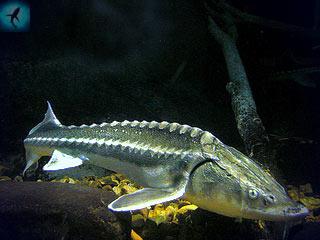
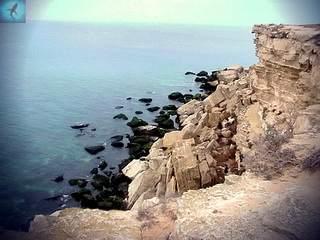



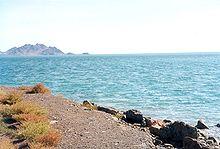
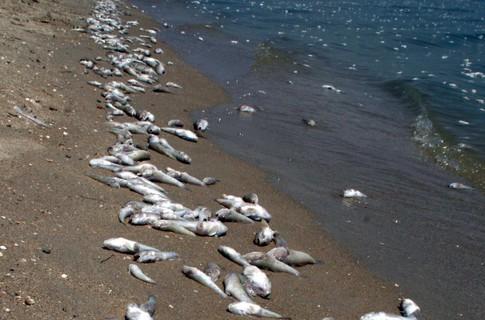
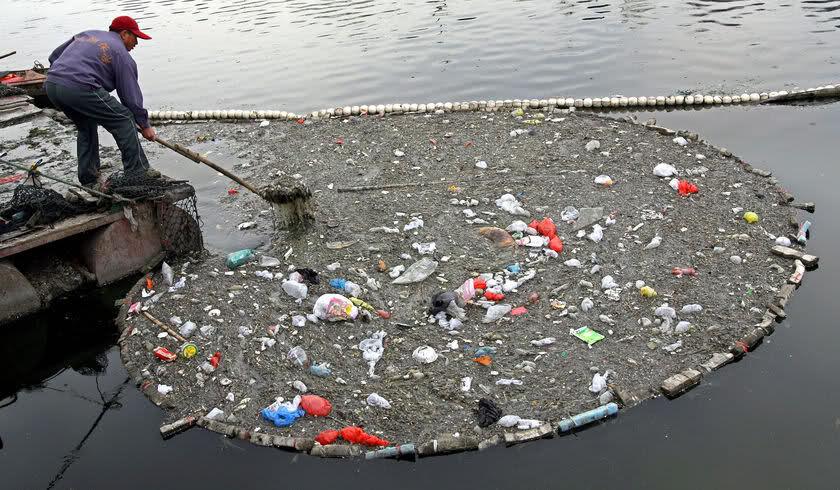
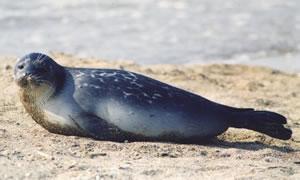

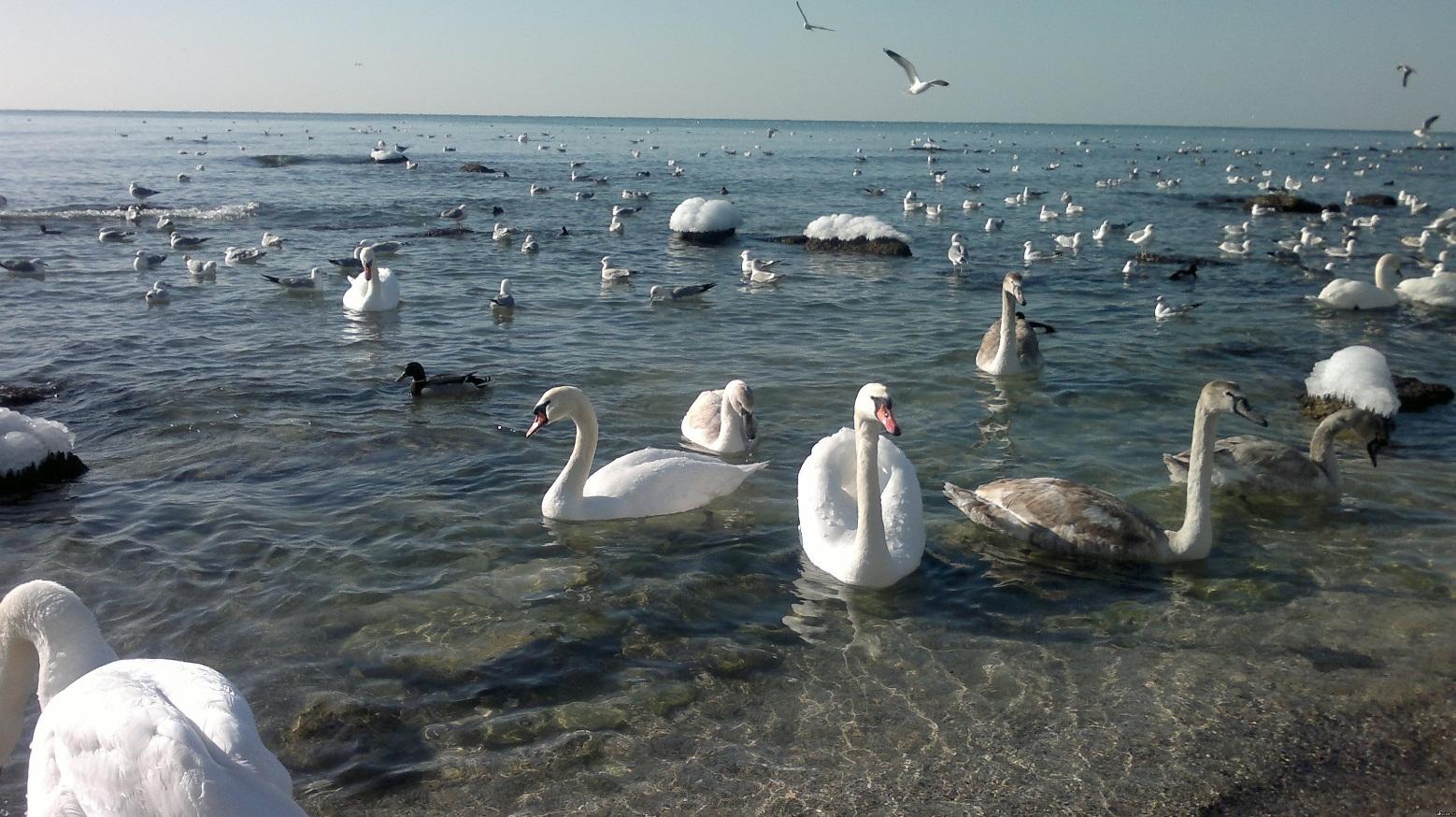
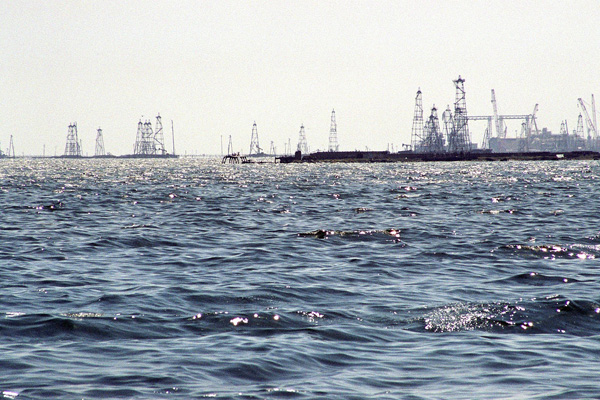

 Получите свидетельство
Получите свидетельство Вход
Вход











 Проект "Фауна Каспийского моря" (1.25 MB)
Проект "Фауна Каспийского моря" (1.25 MB)
 0
0 854
854 4
4 Нравится
0
Нравится
0


